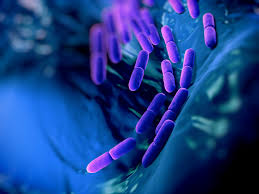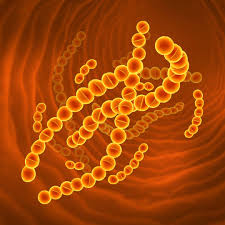Curd, generally referred to as dahi in India, is a fermented dairy product extensively fed internationally. It holds large nutritional cost and performs a essential function in conventional diets, particularly in South Asian cultures.
But beyond its culinary use, curd is a charming product from a systematic viewpoint.
This article delves into the chemistry, microbiology, and physical aspects of curd, offering a detailed knowledge of how it’s made and why it’s such a vital part of the diet.
The Chemistry of Curd Formation
Curd is formed through the fermentation of milk, usually by using the motion of lactic acid microorganisms (LAB).
The method starts off evolved whilst milk is inoculated with a small amount of present curd or a starter culture, which includes particular traces of LAB, along with Lactobacillus bulgaricus and Streptococcus thermophilus.
1. Lactic Acid Fermentation
The number one chemical method involved in curd formation is lactic acid fermentation. The bacteria inside the starter lifestyle convert lactose, the sugar found in milk, into lactic acid.
This acidification lowers the pH of the milk, main to the coagulation of milk proteins, particularly casein. because the pH drops to around 4.6, the casein proteins combine and form a gel-like structure, giving curd its feature texture.
2. pH and Titratable Acidity
The pH of curd is a vital thing in figuring out its texture and flavor. clean milk commonly has a pH of around 6.5 to 6.7 at some point of fermentation, as lactic acid is produced, the pH drops, making the curd greater acidic.
The titratable acidity, which measures the quantity of acid present within the curd, is normally between 0.8% and 1.2% lactic acid. This acidity now not only influences the taste but also plays an essential position in inhibiting the growth of harmful microorganisms, making curd a more secure product for intake.
Microbiological Aspects of Curd
The microbiology of curd is often focused on the useful bacteria responsible for fermentation. The kinds and portions of those microorganisms directly impact the fine, taste, and fitness benefits of curd.
1. Lactic Acid Bacteria (LAB)
Lactic acid microorganisms are the number one microorganisms concerned in curd manufacturing.
The maximum, not unusual traces used encompass Lactobacillus delbrueckii subsp. bulgaricus and Streptococcus thermophilus. these bacteria paintings symbiotically to transform lactose into lactic acid, thereby lowering the pH and causing milk proteins to coagulate.
Lactobacillus bulgaricus: This bacterium performs a key position in the texture and acidity of curd.

It produces lactic acid and different taste compounds, which include acetaldehyde, which make a contribution to the featured taste of curd.
Streptococcus thermophilus: This bacterium is the main responsible for the rapid acidification of milk, which is crucial in the early tiers of curd formation.

It also produces exopolysaccharides, which beautify the viscosity and mouthfeel of curd.
2. Probiotic benefits
Positive traces of LAB utilized in curd production are recognized for his or her probiotic residences.
Probiotics are live microorganisms that provide health benefits whilst eaten up in good enough amounts. ordinary consumption of curd can contribute to a healthful gut microbiome, enhance digestion, and decorate the immune system.
The probiotic traces in curd help maintain the stability of exact microorganisms inside the gut, which is crucial for usual health.
Physical Aspects of Curd
The bodily houses of curd, along with texture, viscosity, and consistency, are stimulated via several factors, including the form of milk used, the fermentation method, and the pastime of lactic acid microorganisms.
1. Texture and Consistency
The texture of curd is often determined by using the coagulation of casein proteins. because the pH decreases, casein molecules combine, forming a gel network that traps fat and water, leading to the formation of an easy, creamy texture.
The firmness of curd can vary depending upon the fat content material of the milk, the fermentation time, and the temperature at which the curd is set. higher fat content commonly outcomes in a creamier and softer curd, while low-fat milk produces a less attackable and extra brittle texture.
2. Viscosity
Viscosity refers back to the thickness or resistance to the glide of curd. it’s miles prompted by way of the production of exopolysaccharides by Streptococcus thermophilus. those polysaccharides boom the viscosity of curd, giving it an easy, thick consistency.
The viscosity of curd also relies upon the protein content and the quantity of lactic acid fermentation. better viscosity is regularly related to better mouthfeel and is favored by consumers.
3. Syneresis
Syneresis is the system of liquid (whey) separation from the curd. whilst a small amount of whey separation is ordinary, immoderate syneresis can indicate poor-first-rate curd.
Elements that make contributions to syneresis encompass over-acidification, high incubation temperatures, and fallacious coagulation.
Controlling these elements at some point in the fermentation method allows for in production of curd with minimum syneresis, making sure of a steady and suitable texture.
Health benefits of Curd
Curd is not handiest a flexible meal product but also supplies several fitness benefits. it is rich in essential nutrients consisting of calcium, protein, and nutrients B2 and B12.
The presence of probiotics in curd aids in digestion boosts the immune system and can assist in preventing gastrointestinal disorders such as irritable bowel syndrome (IBS) and diarrhea.
1. Digestive fitness
The probiotics in curd, consisting of Lactobacillus and Bifidobacterium lines, make contributions to a healthy gut plant life.

These useful microorganisms help in breaking down lactose, making curd simpler to digest for people with lactose intolerance.
The lactic acid produced throughout fermentation also aids in the absorption of nutrients and complements the overall digestive manner.
2. Bone health
Curd is an amazing supply of calcium, that is crucial for retaining sturdy bones and teeth. everyday consumption of curd can assist in preventing osteoporosis and different bone-related problems.

The bioavailability of calcium in curd is higher in comparison to other dairy products, making it an ideal meal for people at risk of bone density loss.
Curd in Culinary Applications
Curd is a staple in many culinary traditions, specifically in Indian cuisine. it is used as a base for numerous dishes, together with raitas, lassis, and curries.
Its cooling houses make it a great accompaniment to highly spiced foods, and it’s miles frequently consumed as a part of a balanced meal.
In baking, curd is used as a natural leavening agent because of its acidity, which reacts with baking soda to supply carbon dioxide, assisting baked goods upward push.
Conclusion
Curd (dahi) is a product of each technological know-how and way of life, supplying a completely unique combination of flavor, texture, and health benefits.
Know-how the chemistry behind its formation, the microbiological aspects that make contributions to its fitness benefits, and its physical homes offer a deeper appreciation of this versatile dairy product.
Whether eaten up on its very own, utilized in cooking, or applied for its probiotic blessings, curd remains a vital part of diets globally, bridging the gap between food technology and culinary culture.
